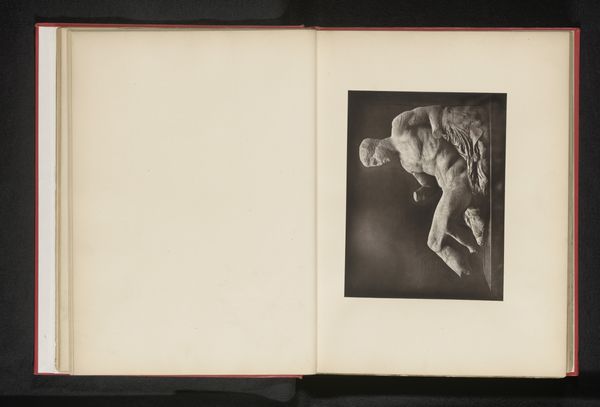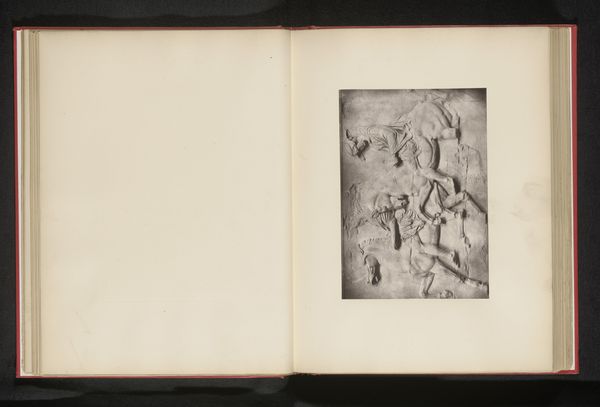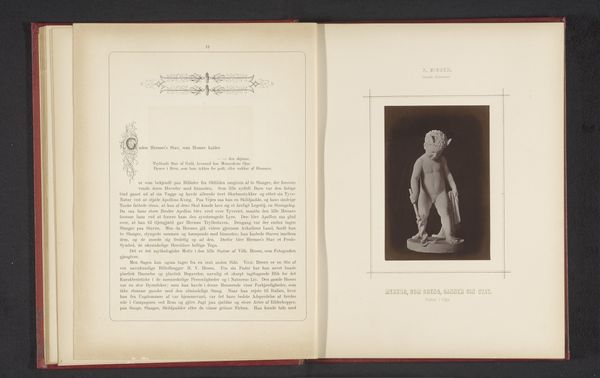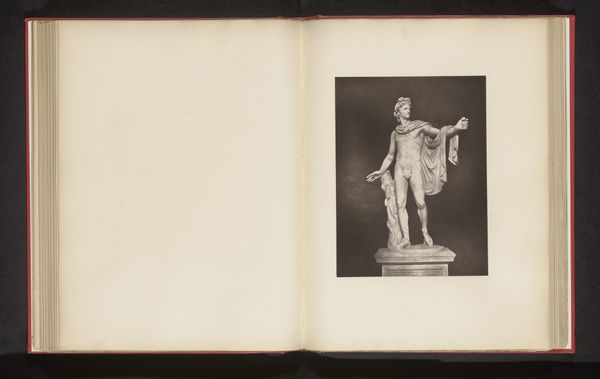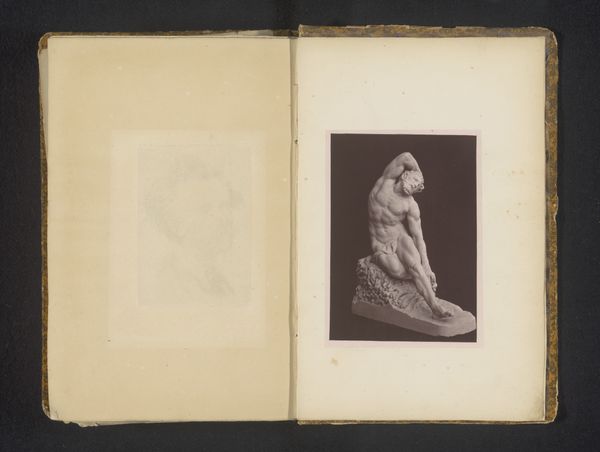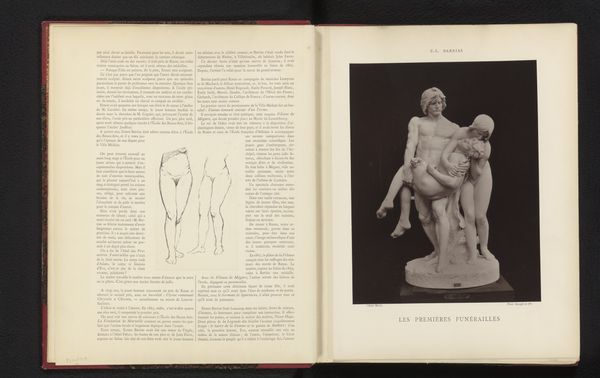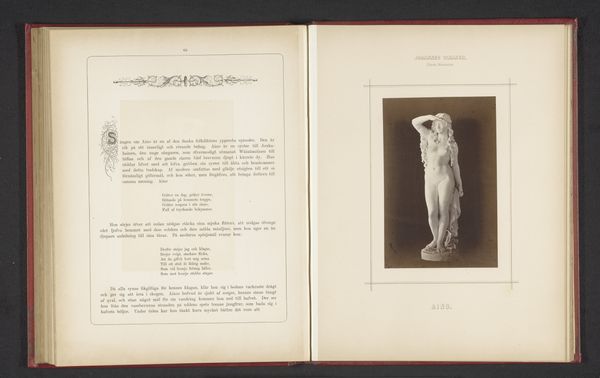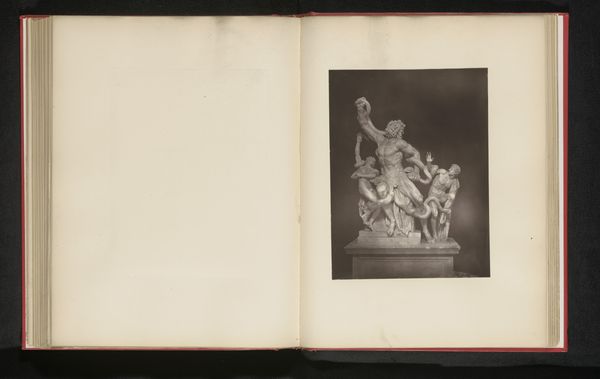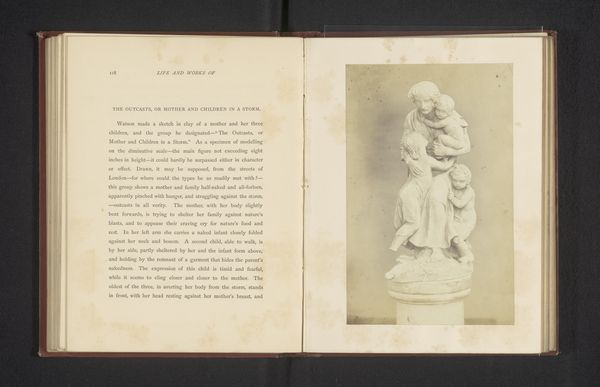
Sculptuur in het Palazzo Pitti te Florence, voorstellende de jonge Michelangelo beitelt het hoofd van een faun before 1890
0:00
0:00
Dimensions: height 120 mm, width 84 mm
Copyright: Rijks Museum: Open Domain
Editor: So, here we have an image of "Sculptuur in het Palazzo Pitti te Florence, voorstellende de jonge Michelangelo beitelt het hoofd van een faun," made before 1890. It's a photograph of what seems to be a sculpture, perhaps Neoclassical? There's a figure working on what looks like a faun’s head. I’m immediately drawn to this image because of how art memorializes art! What cultural memory does this evoke for you? Curator: Indeed, the image itself acts as a container of cultural memory. The youthful Michelangelo becomes an almost archetypal image, the struggling artist, forever chiseling away at raw potential. But the faun is also telling. Editor: How so? Curator: Think of the faun’s established symbolic value: often representing untamed nature, passion, even a Dionysian wildness. Michelangelo shaping this faun is more than mere sculpting; it’s a powerful symbol of the artist attempting to mold raw instinct, to bring classical order to something inherently chaotic. Does that resonate with you? Editor: That connection between controlling instinct and artistry is powerful, especially viewing Michelangelo this way, almost as a mythic figure himself! It layers the work with so many possible meanings. Curator: Exactly! We’re dealing with layers upon layers. This photographic print, taken before 1890, is capturing a sculpture that portrays a formative myth about artistic creation. It speaks volumes about how cultures continually re-interpret their own artistic origins and ideals. Editor: I hadn’t considered that—it’s like looking at a reflection of a reflection, each holding its own historical weight! Thank you, that was incredibly insightful. Curator: My pleasure. It's in these layers of interpretation that the true power of art, and the icons they create, reside.
Comments
No comments
Be the first to comment and join the conversation on the ultimate creative platform.
